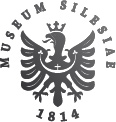Slezský sborník
rok 2014
ročník 112
číslo 1
Obsah / Contents
Studie / Articles (s. 5–90)
Jakub Mamula: Vilém Opavský v zápase o Minstrberské knížectví. Příspěvek k biografii opavsko-minstrberského zeměpána v polovině 15. věku
s. 5–22
William of Opava in the struggle for the Duchy of Munsterberg. Paper concerned with the biography of the Duke of Opava-Munsterberg in the half of the 15th century
The life of Duke William of Opava was affected by the main events of Lands of The Bohemian Crown, whether the Hussite wars or the unsettled period after the death of the King Albrecht II. of Habsburg. One of the important chapters in William’s life, in historiography neglected up to now, was the effort to assert himself within the Duchies of Silesia. In this context it was especially the acquisition of the Duchy of Munsterberg in 1443. William, the joint heir of his father’s estate in the Duchy of Opava, also started to exercise his claims in the Duchy of Munsterberg on the basis of kinship. The representatives of the Duchy of Munsterberg accepted the Duke as their new governor in that year; nevertheless first he had to deal with a strong adversary and former pledge governor of the Duchy of Munsterberg, East-Bohemian Lord Hynek Krušina of Lichtenburg. The pacification of the Bohemian Lord took form of military actions in Silesia. The Duke also had to take a certain stand towards the Munsterberg nobility, in particular towards the local Duke Friedrich Stosch. Consequently, the Duke William accepted the role of Governor in the Silesian Association, which aimed its effort to pursuing marauders and violators of public order in Silesia of the 40’s of the 15th century. However, the turning point came when the initial enmity with the East-Bohemian Lord Hynek Krušina of Lichtenburg changed into mutual cooperation which eventually led to the breakup with the Dukes of Silesia as well as with the Munsterberg Governor in the Silesian Association Friedrich Stosch. All the things considered, the Duke’s independent actions, indeed caused that the defender of peace eventually became its violator. The Duke William of Opava left perceptible traces in Silesia within the short but stormy period of interregnum.
Key Words: William of Opava, Duchy of Munsterberg, Duchy of Opava, Silesia, interregnum, Duchies of Silesia, 15th century, Premislids of Opava, Silesian Association
Petr Kadlec: Základní aspekty vývoje reálného školství na Moravě a ve Slezsku do počátku 20. století
s. 23–68
Fundamental aspects of the development of Realschulen in Moravia and Silesia up to the early 20th century
The study focuses on the development of Realschulen in Moravia and Silesia from the tentative beginnings of the system in the first half of the 19th century to the First World War. The author’s aim is to outline the fundamental aspects of this development, pointing out the status of Realschulen in the education system and discussing the role played by the Realschulen in the formation of a technically intelligentsia. The study focuses particularly on the period when these schools grew most rapidly – the second half of the 19th century and the early 20th century, when the Realschule emerged as a new type of secondary school alongside the Gymnasium. A large part of the study concerns the students of Realschulen – including the changing composition of the student body in terms of territorial origin and sociocultural characteristics, as well as the careers of former students after graduation. Besides examining the situation in the provinces of Moravia and Silesia and the entire Cisleithanian part of the Habsburg Monarchy, the study also includes details on the situation in individual schools.
Key Words: education, secondary schools, Realschulen, intelligentsia, Moravia, Silesia, students, 19th centu-ry, 20th century
Soňa Gabzdilová: Druhá etapa reslovakizácie v Československu a politický vývoj po februári 1948 vedúci k jej terminácii
s. 69–90
The second phase of Reslovakization in Czechoslovakia and political development after the February 1948 leading to termination of this policy
The paper is dealing with the status of Hungarian population in Slovakia during the second half of forth decade of twentieth century with the focus upon the situation of so called Reslovakizants after the communist putsch in February 1948. The attention is given to reasons, goals and to the measures of state authorities in regard to process of Reslovakization. The attention is focused upon the change of approach of Communist party of Czechoslovakia toward the members of Hungarian minority since autumn 1948, which was necessary as a result of a new international situation resulting in becoming of Czechoslovakia a satellite of Soviet Union. The paper is analyzing a changed approach toward ethnic adherence of Reslovakizants, which was more complicated in circles of Communist Party of Slovakia then among Czech communists.
Key Words: Czechoslovak Republic, nationality question, Hungarian minority, Reslovakiazation
MATERIÁLY / MATERIALS (s. 91–135)
Viktor Pohanka: „Item eynem bothen kein der Sweidenicz zu dem von Colditz…“: K itineráři svídnicko-javorského hejtmana a hornolužického fojta Albrechta z Koldic v časech kalicha
s. 91–135
„Item eynem bothen kein der Sweidnicz zu dem von Colditz…“: On the Itinerary of Governor of Duchy of Świdnica-Jawor and Governor of Upper Lusatia in the Era of Hussitism
The study covers the itinerary of Albrecht of Koldice, one of the most significant complices of King Sigismund, who for a long time not only lived in the Luxemburg’s proximity but was also the Governor of Swidnice-Jawor as well as Wroclaw and Upper Lithuania. Naturally, the question is how Koldic managed all these offices, in particular how he divided his time among the mentioned regions. The study also describes the range of the Governor’s activities within the Middle-European diplomacy and thus introduces one of Sigismund’s influential courtiers whose activity has not attracted attention yet, not even in the context of the Governor’s office.
Key Words: administration, Albrecht of Koldice, court, Duchy of Świdnica-Jawor, Governor, hussitism, in-terregnum, itinerary, Sigismund of Luxembourg, Upper Lusatia
Recenze / Reviews (s. 136–143)
Zprávy o literatuře / Brief Notices (s. 144–153)
Kronika / Chronicle (s. 154–157)
Bibliografická příloha / Bibliography (s. 158–159)
Poslední aktualizace článku: 06.10.2015
Vytisknout celý článek







